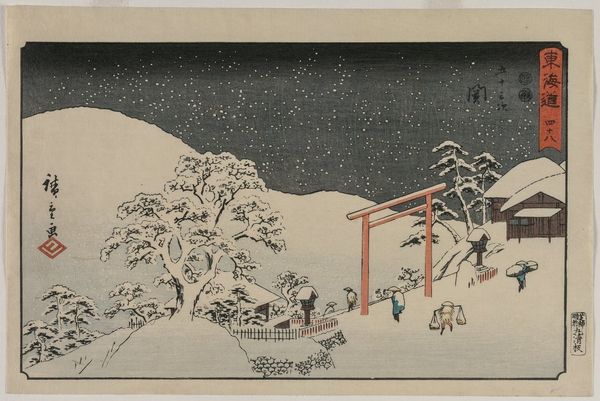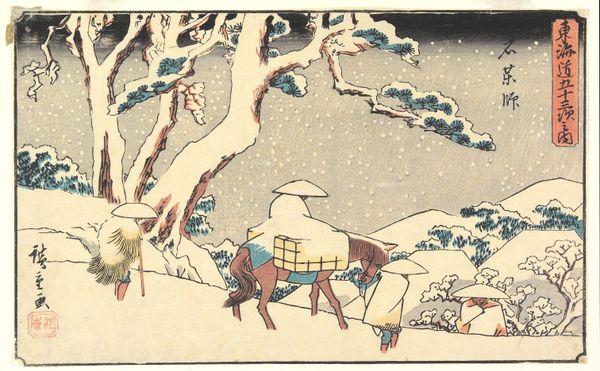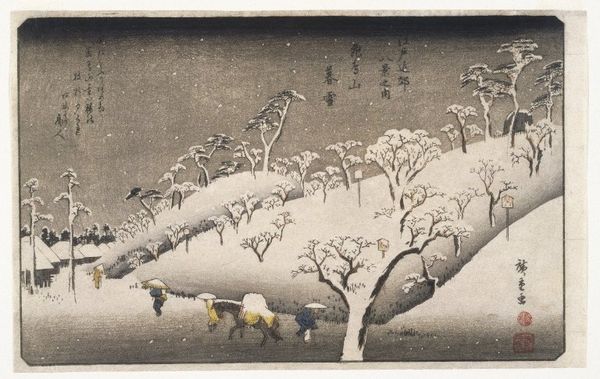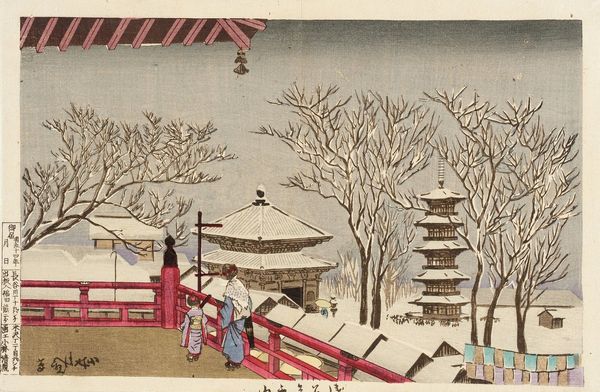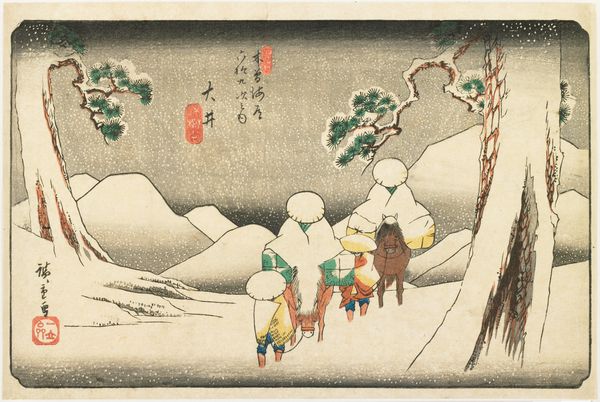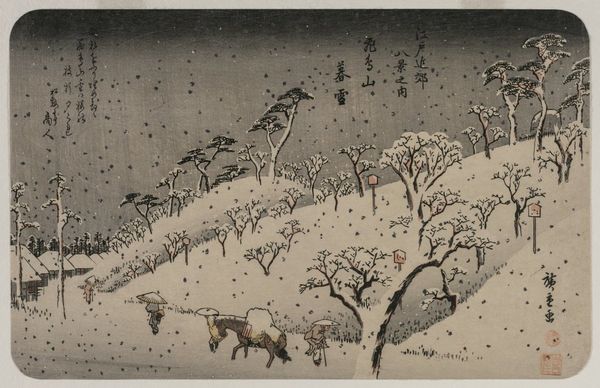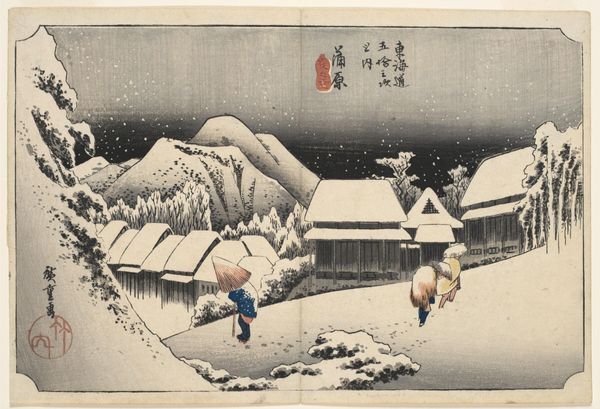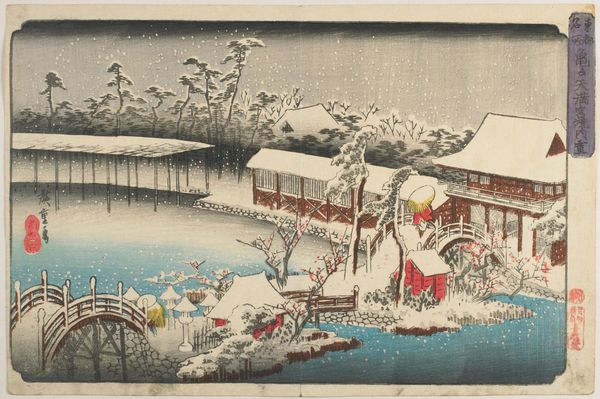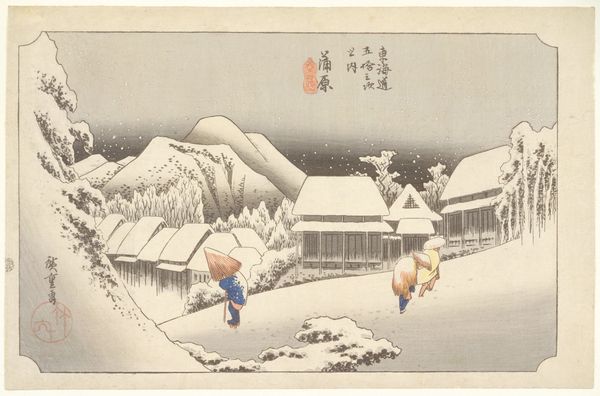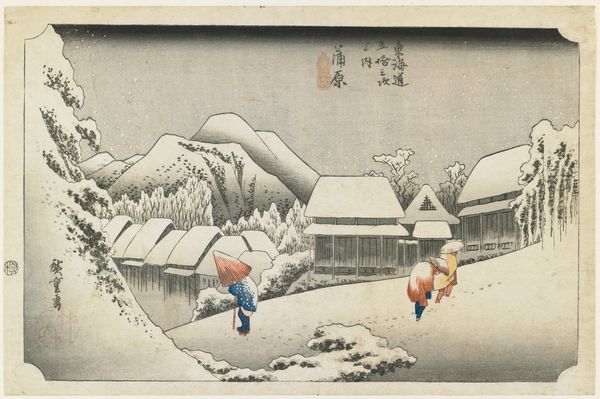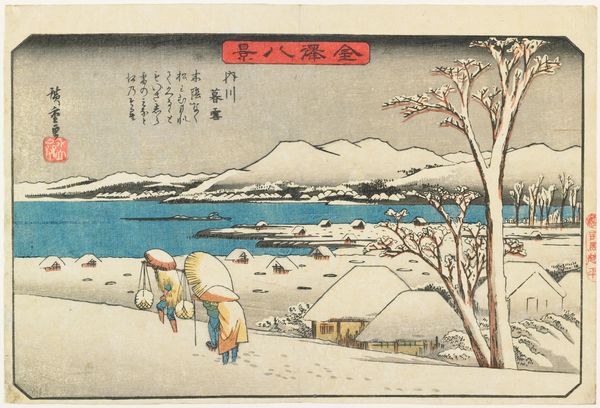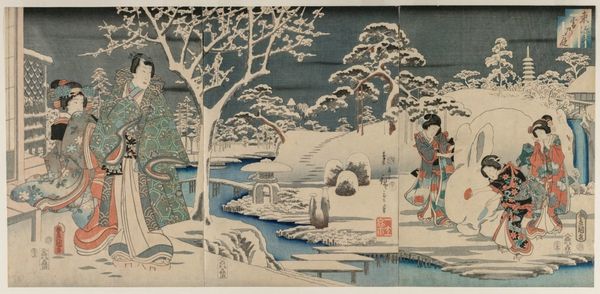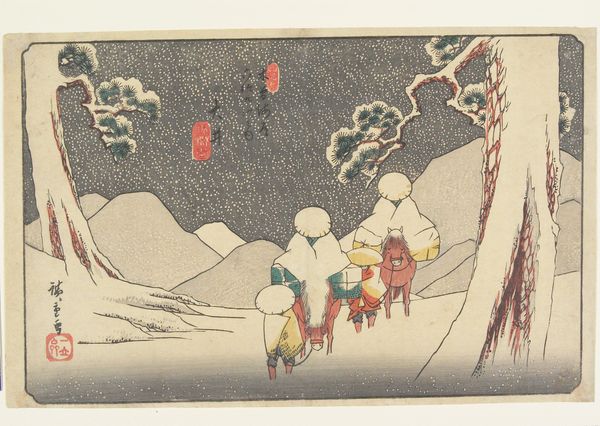
print, ink, woodblock-print
#
narrative-art
# print
#
landscape
#
winter
#
ukiyo-e
#
ink
#
coloured pencil
#
woodblock-print
Dimensions: 6 1/8 x 8 3/8 in. (15.5 x 21.2 cm) (image)6 9/16 x 9 in. (16.6 x 22.9 cm) (sheet)14 x 17 15/16 in. (35.5 x 45.5 cm) (mat)
Copyright: Public Domain
Editor: So, this woodblock print is titled "Fujikawa", dating back to 1840-1842, by Utagawa Hiroshige, and currently resides in the Minneapolis Institute of Art. There’s a striking stillness about this snowy landscape; the monochromatic palette creates a real sense of cold. What's your interpretation of this work? Curator: The structural organization relies heavily on contrasts. Observe the bare trees flanking the scene, framing the viewer's eye. Notice the balance between the textured snow and the flatter, subtly graded sky. The semiotics of winter here speak of austerity, quietude; it’s a study in visual reduction. How does the repeated triangular motif of the thatched roofs strike you in relation to the overall composition? Editor: It's interesting how the shapes create a sense of perspective and lead the eye back into the scene. The roofs have the affect of being little steps. Is the artist perhaps highlighting a kind of human encroachment into nature? Curator: Perhaps. But before we reach that conclusion, consider the foreground: a heavily laden packhorse, barely visible under a mound of snow, which anchors our view. The success of the work hinges on this triad: the bare trees, the human presence—seen mostly as shapes--, and the dominating snow. How do these compositional components synthesize? Editor: They suggest endurance, the quiet perseverance of life even under harsh conditions. I am curious about the textual elements; do they enhance or distract from the visual unity? Curator: The inscription functions as part of the overall design, adding calligraphic tension. They provide another textural layer but not narrative detail, which further emphasizes the structural form of this composition. The work is a visual poem constructed through color and form and not subject. Editor: That's a perspective I hadn't fully appreciated – focusing on structure rather than solely seeking narrative. It really forces a different kind of looking! Curator: Precisely. Form dictates content; in Fujikawa, the harsh beauty reveals a serene tension, one that resonates long after the last snowflake falls.
Comments
No comments
Be the first to comment and join the conversation on the ultimate creative platform.
